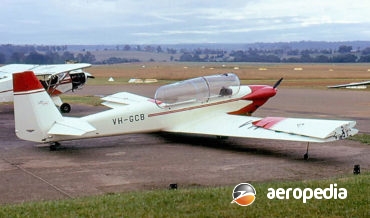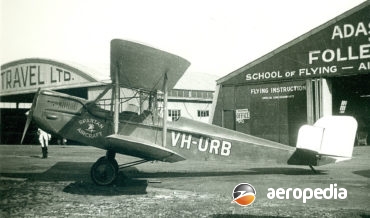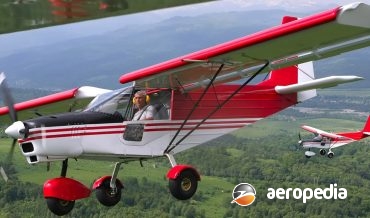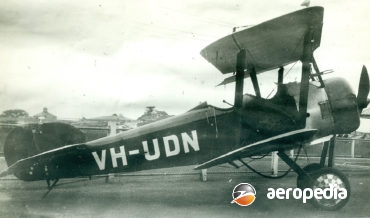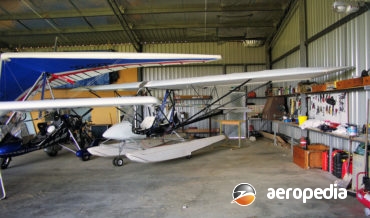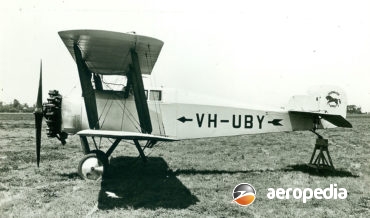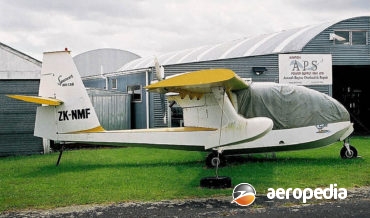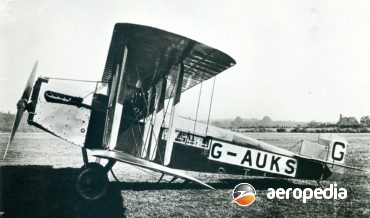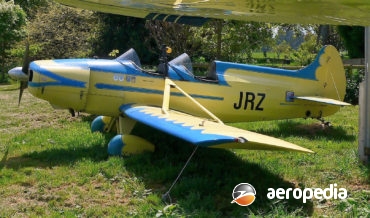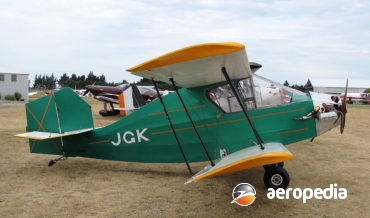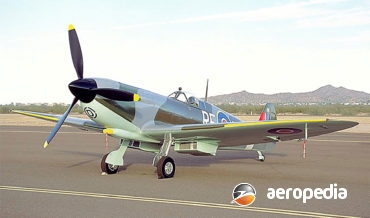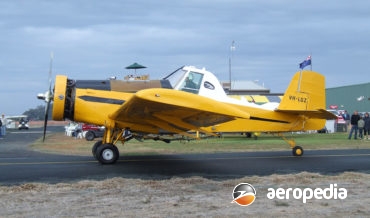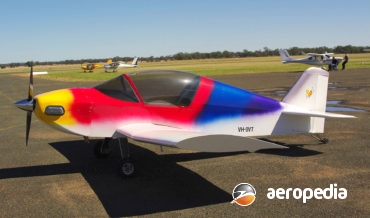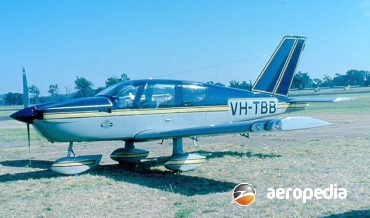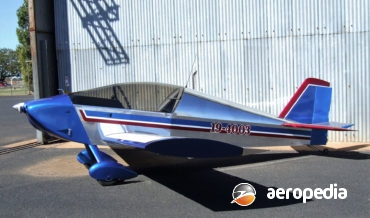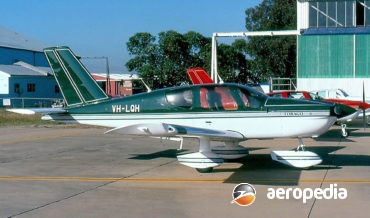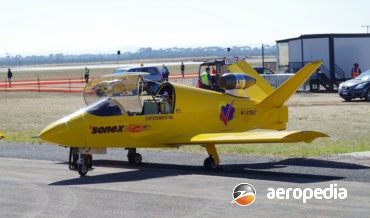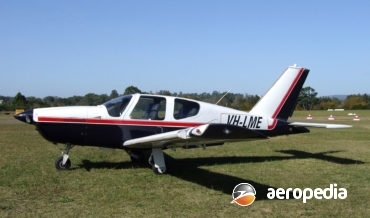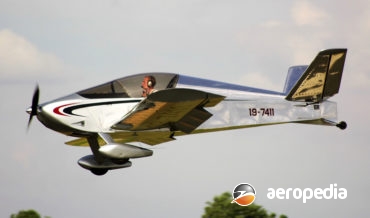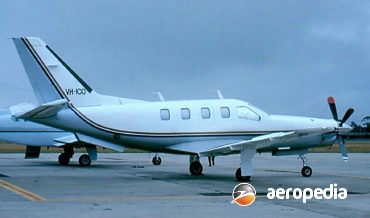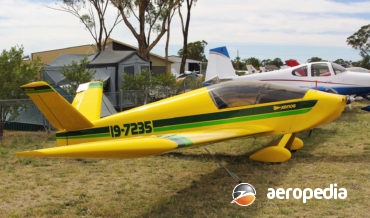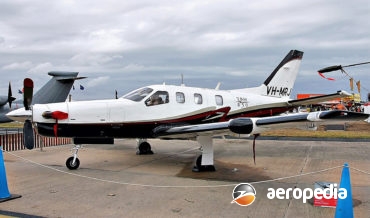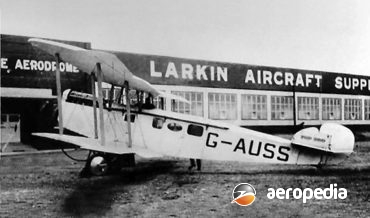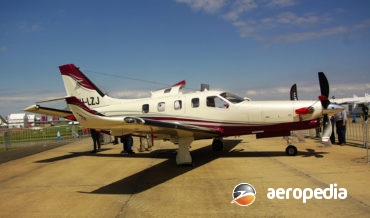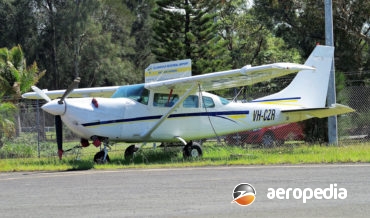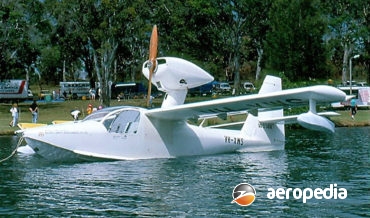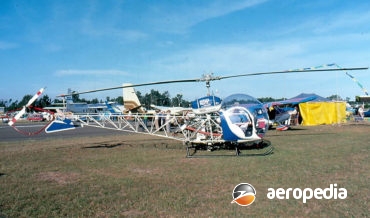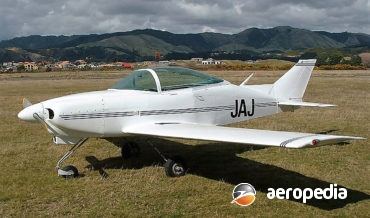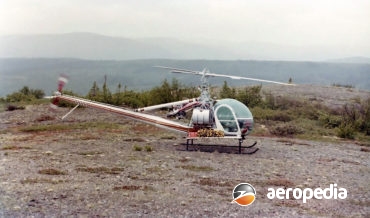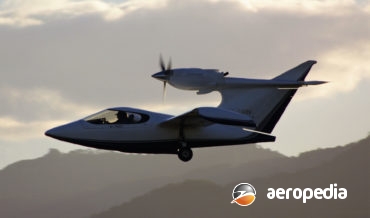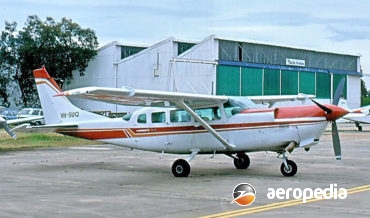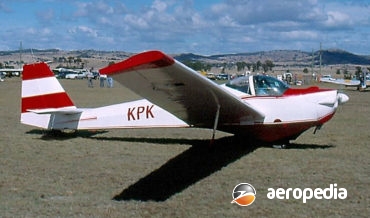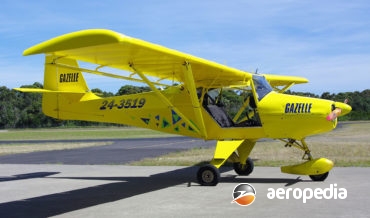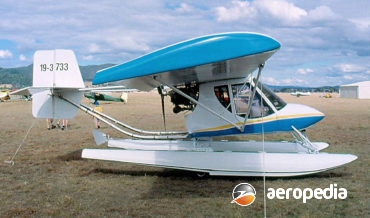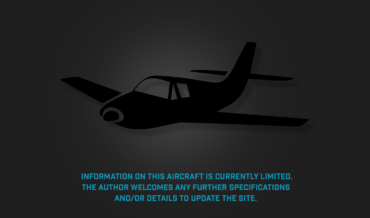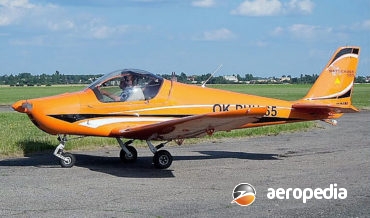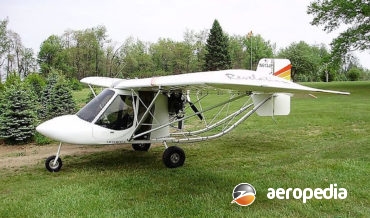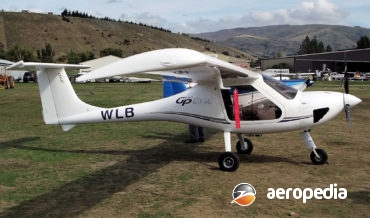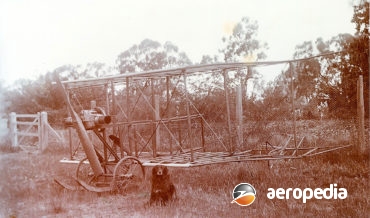All Contents
Contents
The Sportavia-Putzer series of aircraft was designed in Germany by Mr M Rene Fournier, the company being formed in 1966 to take over from Alpavia the manufacture of his series of light aircraft.
David C. Eyre
- May 8, 2019
Produced as a successor to the Simmonds Spartan, between 1930 and 1935 Spartan Aircraft Ltd constructed a total of twenty-six examples of its Three-Seater, the first two being completed at Southampton, and the remainder at the company’s new facility at East Cowes on the Isle of Wight.
David C. Eyre
- May 8, 2019
The SP-30 is a two-seat light sporting and training aircraft manufactured in Russia by Spectr Aero and is described as an upgrade and development of the Zenair CH-701 aircraft series with changes aimed at improving its performance and ability to meet requirements in the light-aviation field in Russia.
David C. Eyre
- May 8, 2019
In 1919 Sopwith Aviation and Engineering Co Ltd produced the Dove, this being a two/three-seat variant of the Sopwith Pup fighter of World War I converted for use as a private touring and training aircraft.
David C. Eyre
- May 8, 2019
Designed and developed in Canada by Spectrum, the Beaver is a strut-braced high-wing monoplane of aluminium tube construction with double surface Dacron covering, and with a Mylar reinforced leading edge.
David C. Eyre
- May 8, 2019
The Gnu was introduced in 1919 by the Sopwith Aviation Co of Canbury Park Road, Kingston-on-Thames, as a three-seat touring biplane or taxi aircraft with an enclosed cabin for the two passengers, although the enclosed cabin was found to be very cramped and was not popular and most were operated
David C. Eyre
- May 8, 2019
The Spencer Air Car, also known as the Amphibian Air Car, was designed by Mr P H Spencer as a four-seat amphibian bearing a strong resemblance to the Republic Seabee, which he also designed.
David C. Eyre
- May 8, 2019
The Wallaby, which was based on the Sopwith B.1 Bomber, was similar to the Sopwith Atlantic, which had been used by Harry Hawker in an unsuccessful trans-Atlantic attempt.
David C. Eyre
- May 8, 2019
In 1957 Mr Tony Spezio commenced design of a two-seat light sporting aircraft that reminded him of some of the racing aircraft that were seen around the airshow circuit in the United States in the 1930s, particularly the Howard Ike.
David C. Eyre
- May 8, 2019
Sorrell Aviation in the United States produced a series of ultralight aircraft, including the Guppy and the Hiperlight.
David C. Eyre
- May 8, 2019
The Spitfire Aircraft Company Ltd was set up to build kits and parts for amateur builders interested in building and flying a full scale replica of the Supermarine Spitfire constructed from wood.
David C. Eyre
- May 8, 2019
This series of agricultural aircraft has received a number of appellations over the years, being known as the Snow Commander, Ayres, Marsh, Thrush, Aero Commander Ag Commander and the Rockwell Thrush Commander.
David C. Eyre
- May 8, 2019
The Onex is one of a series of light aircraft produced in the United States by Sonex Aircraft of Oshkosh in Wisconsin as a kit for amateur construction, the first Onex variant being flown for the first time on 27 January 2011.
David C. Eyre
- May 8, 2019
In 1979 Socata, the general aviation division of Aerospatiale, was continuing with development of a series of light aircraft and at this time the TB-10 was named the Tobago, and a new less powerful model became the TB-9 Tampico, the latter being aimed at the training market.
David C. Eyre
- May 8, 2019
The Sonex is a light two-seat monoplane designed by John Monnett, designer of the Monnett Sonerai, Moni, and others, and was introduced in 1998.
David C. Eyre
- May 8, 2019
In 1975 the Research and Development Department of the Societe de Construction D’Avions de Tourisme et D’Affaires in France (a subsidiary of Aerospatiale) initiated the design of a new series of touring monoplanes.
David C. Eyre
- May 8, 2019
The SubSonex was designed by John Monnett and began as a dream in his mind for a personal sport jet that could be flown by someone with average to good pilot skills.
David C. Eyre
- May 8, 2019
The TB-20 Trinidad was designed by Socata, a subsidiary of Aerospatiale, as a natural up-market development of the popular TB-10 Tobago but fitted with a retractable undercarriage, a 187-kw (250-hp) engine, and an increased fuel capacity.
David C. Eyre
- May 8, 2019
The Waiex is a variant of the Sonex series of light all-metal aircraft and the main variation from the Sonex is a V-tail.
David C. Eyre
- May 8, 2019
TBM was established by the Aerospatiale General Aviation Division, Socata, and the US manufacturer Mooney, to produce a high-performance business aircraft.
David C. Eyre
- May 8, 2019
Following the success of other aircraft in the Sonex range, John Monnett designed the Xenos which is aimed at bringing the cost of motor gliding to an affordable level.
David C. Eyre
- May 8, 2019
The TBM 850 is an up-rated variant of the TBM 700 business aircraft to take a more powerful PT6A-66D turboprop and was aimed at the market to provide a higher cruising speed and journey
David C. Eyre
- May 8, 2019
In 1920 the British Air Ministry published rules for a Small Commercial Aeroplane Competition and a number of designs were entered, including the Westland Limousine and the Sopwith Antelope.
David C. Eyre
- May 8, 2019
The TBM-900 is a development of the business and executive / utility aircraft series produced in France since it was introduced to the market in 1990, examples being operated over the years by the French Arm and Air Force, with 324 TBM-700s being delivered, followed by 338 TBM-850s, being replaced
David C. Eyre
- May 8, 2019
In 1985 Soloy Aviation Solutions converted a Cessna 206 to turbine power, replacing the Continental TIO-520 engine with a Rolls Royce / Allison 250 turboshaft, this engine providing in this installation 311-kw (417-shp) and gives better performance, safety and value, and since then other Cessna models including the 182 and
David C. Eyre
- May 8, 2019
The FSRW, constructed almost entirely of fibreglass, was initially a development project of the Sydney University School of Aeronautical Engineering, in 1974.
David C. Eyre
- May 8, 2019
For many years Soloy Conversions in the United States has been involved in converting of aircraft and helicopters to turbine power, using the Allison 250 range of turbines.
David C. Eyre
- May 8, 2019
The design of the Sidewinder was commenced in 1958 by Jerry Smyth of Huntington, Indiana, it being a two-seat side-by-side sporting monoplane.
David C. Eyre
- May 8, 2019
The Hiller UH-12 series of utility helicopters has been in service world-wide for many years, being produced by the original Hiller company and was known as the Model 360 family, and some were produced by Fairchild-Hiller, , being supported by Hiller Aviation Inc which produced new or re-manufactured examples until
David C. Eyre
- May 8, 2019
One of a new breed of high performance homebuilt aircraft available to the amateur constructor in kit form, the Seawind 2500 was designed by Seawind Industries of Haliburton, Ontario, Canada,the prototype (C-GFNL) flying for the first time on 23 August 1982.
David C. Eyre
- May 8, 2019
Soloy Aviation Solutions has for many years been involved in converting aircraft and helicopters to turbine power and aircraft involved have included the Cessna 206, 207, 208 etc.
David C. Eyre
- May 8, 2019
Designed by Egon Scheibe, this series of self-launching gliders was introduced in 1968 by the German firm, Scheibe, which commenced production of a side-by-side two-seat dual-control training version of the SF-24A Motorspatz.
David C. Eyre
- May 8, 2019
Following the success of the Kitfox in Australia, development of the series by Calair, a division of Hedaro International Pty Ltd, lead to the CA-22, the first flight of this model being made on 22 June 1990, this being certificated to CAO 101.55 standard, followed by development of JAR-VLA version
David C. Eyre
- May 8, 2019
The Genesis is a two-seat, side-by-side, light touring and training aircraft supplied in kit form by SlipStream Industries Inc of Davenport, Idaho.
David C. Eyre
- May 8, 2019
The Skybaby is one of many ultralight aircraft designed and manufacturers in the 1980s to meet US FAR 103 Ultralight Vehicle regulations.
David C. Eyre
- May 8, 2019
In 1977 a Melbourne aircraft designer, Ross Nolan, proposed an aircraft known as the Opal, the aircraft to be of moulded fibreglass, with a 67-kw (90-hp) converted Volkswagen engine, have a cruising speed of 290 km/h (180 mph) and a range of 4,630 km (2,977 miles).
David C. Eyre
- May 8, 2019
The Skyleader 500 is a 2009 entry to the market and is a light two-seat training and touring aircraft produced in the Czech Republic and is available to meet regulations which require max weights of 450 kg, 472.5 kg, 544 kg and 580 kg.
David C. Eyre
- May 8, 2019
The Revelation is a two-seat light sporting aircraft usually registered in the ultra-light category produced by Slip Stream Industries Inc in the US and was the result of deemed requirement for a two-seat training type for that part of the market.
David C. Eyre
- May 8, 2019
The Skyleader GP One is one of a series of light aircraft produced by Skyleader Aircraft, a subsidiary of Jihlavan Airplanes, in the Czech Republic.
David C. Eyre
- May 8, 2019
William Douglas Sloane (known as Douglas) was born on 4 June 1890 at Mulwala Station north of Yarrawonga, VIC.
David C. Eyre
- May 8, 2019
Recent Comments
Archives
Categories
- No categories
Categories
- No categories
Latest Posts
Newsletter

